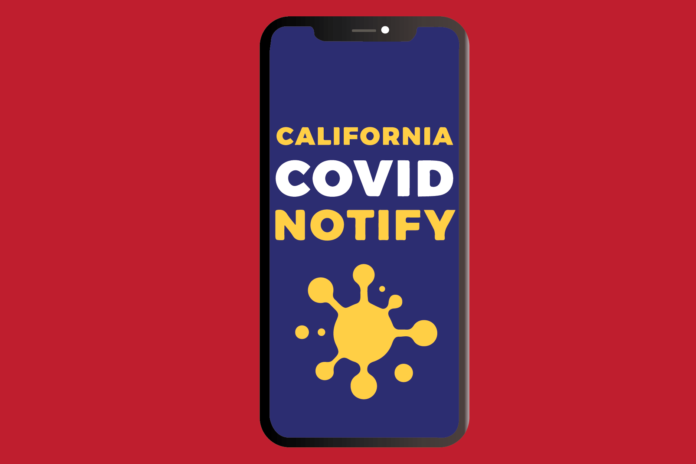How six UC campuses are revolutionizing contact tracing to control the spread of COVID-19
UC Davis and the wider UC system have been contributors to COVID-19 research and COVID-prevention tools since the beginning of the pandemic. One of these tools is California COVID Notify, a contact tracing app that can notify participants when they have had a “high risk contact” with a positive case of COVID-19. Developed by Google and Apple, the technology is currently being piloted at six UC campuses across California. Carrie Byington, the executive vice president and head of UC Health, explained why using a tracing app like California COVID Notify is so helpful in tracking the spread of the virus.
“If you think about your average day and if we hope for a time with fewer restrictions, you might come into contact with many people during the day that you don’t know,” Byington said. “If they’re carrying COVID-19, doing contact tracing can be very difficult if you don’t know their name or where they live. Your cell phone can alert you that you have been in contact with one or more people for 15 minutes that might be COVID positive.”
Although contact tracing has been an important tool throughout the pandemic, Dr. David Lubarsky, the CEO of UC Davis Health, explained that it is not efficient enough to keep up with the virus’s spread, especially as California and many other states are seeing spikes in cases right now. Instead, he said that a technological solution like California COVID Notify is extremely helpful in ensuring that people who have had close contact with a positive case find out in a timely manner.
“It really speeds up, if you’re going to get symptoms, getting a test,” Lubarsky said. “It really unmasks people who are asymptomatic who actually have the virus, because you can’t get it if you haven’t had some sort of high-risk exposure. This really cuts into the spread of the disease because responsible people want to know, and they’re going to test themselves and keep themselves out of circulation until they know that they aren’t at risk anymore.”
The technology is being used across universities and at associated health centers, including UC Davis and UC Davis Health. Lubarsky explained that the heightened risk of exposure that comes with being on a college campus or in an associated health center makes UC Davis a great place to test the technology.
“One of the reasons we’re originally rolling it out at colleges and universities and health systems is because there’s a very obviously highly-educated population and people who are living in close proximity who are not in the same family, so you can’t really limit your interactions the way you could if you stayed in your own home,” Lubarsky said. “There’s so much community spread right now that no matter how perfect [we are] there’s going to be people who catch it in the community and bring it into the campus or health system. [It’s best to] immediately notify everybody that they may have had a high-risk exposure so that they can protect themselves and their loved ones.”
Lubarsky also stated that by comparing the spread of COVID-19 on UC campuses that are using this technology to the spread on campuses without this technology, they can identify the impact of the app. If there is lower transmission and it is seen affecting the actions of students and staff, the app is working effectively.
The UC felt inclined to institute this specific tracking app because of its secure privacy restrictions, Byington said.
“This app really made sense for us because of the excellent privacy controls,” Byington said. “It is an anonymous app and no data is stored about the user’s identity, so we felt that it would be an innovative tool and one that our campus populations would be willing to accept.”
If a user of the app comes into close contact with a user who is COVID-19 positive, they will be notified only that they have had close contact. Users do not have access to the name of the person they came into contact with, their phone number or when and where they were exposed. Lubarsky explained that the use of encrypted data protects all users from data abuse.
“The data never passes through some sort of giant data bank,” Lubarsky said. “There’s no storage of the interactions that we’re having as we pass each other. There’s an exchange of an encrypted chain link that says this person and that person were close together and it’s just stored in your two phones. All the data is just in your phone. There’s no risk of abuse of the data because it doesn’t exist anywhere.”
Byington shared that if this technology proves to help curb the community spread across campuses, she hopes to see it implemented across the state.
“We think it would be a really good option for California,” Byington said. “We think it’s something that many people would want to use and we know that the more people that use it, the more likely we are to be able to identify exposures.”
Lubarsky explained that technology like this, that promotes greater awareness of the virus, will be necessary to control the spread.
“They say ignorance is bliss and the best state to live in is denial, but that’s not the best way to beat this pandemic,” Lubarsky said. “If we can reduce the spread, we can contain the virus.”
Written by Katie DeBenedetti — features@theaggie.org





